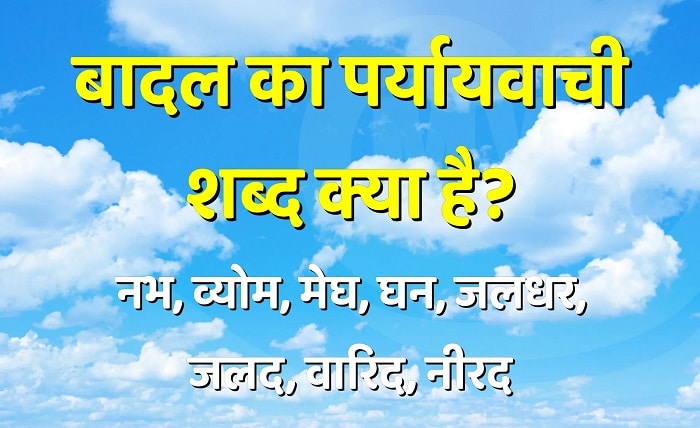
Exploring “Badal Ka Paryayvachi Shabd”: Understanding Synonyms in Hindi
Introduction: Synonyms are essential for improving communication and expression in the complex fabric of the Hindi language. An example of a fascinating word is “badal ka paryayvachi shabd.” It is time to explore this idea further and determine its meaning.
Defining Badal Ka Paryayvachi Shabd: The term “badal ka paryayvachi shabd” describes terms that are synonymous with “badal” (clouds) in Hindi or that have meanings that are similar to one another. Investigating these synonyms improves communication’s linguistic diversity and depth.
Importance of Synonyms in Hindi: By providing alternatives that work in various situations or subtly communicate ideas, synonyms increase the range of possible expressions. They enhance the texture of the language and promote communication that is precise and clear.
Examples and Usage: “Badal” is sometimes synonymous with “megh,” “ghat,” “mand,” and “garaj.” Every term conveys a different facet of clouds, such as their appearance, motion, or related weather events.
Expanding Vocabulary Through Synonyms: Acquiring synonyms improves vocabulary and makes it easier to understand a variety of texts and communicate effectively. Synonym practice on a regular basis improves communication and language abilities.
Cultural and Linguistic Implications: Synonym usage reflects the linguistic evolution and cultural attitude of Hindi-speaking communities. This exemplifies the adaptability and creativity that arise from using language in several contexts and regions.
Challenges in Understanding Synonyms: Despite its advantages, understanding synonyms can be difficult, particularly for language learners or those transferring between languages. Mastery requires exposure to a variety of usage scenarios and contextual awareness.
Resources for Learning and Practicing: There are numerous tools available, including dictionaries, online resources, and language learning software, to make the study and practice of synonyms in Hindi easier. Practicing synonyms with a variety of texts and conversations also helps.
Conclusion: “Badal ka paryayvachi shabd” is a perfect example of how diverse and rich the Hindi language is. Adopting synonyms promotes efficient communication and improves language skills as well as cultural understanding.
FAQs:
- Why are synonyms crucial for learning a language? Synonyms provide substitutes for articulating concepts, expanding one’s vocabulary, and encouraging subtle communication—all essential components of learning a language.
- What is the best way to use synonyms in regular conversation? Regular exposure to a variety of texts and conversations, as well as deliberate practice using synonyms in various contexts, facilitate the seamless integration of synonyms into everyday speech.
- Are there any particular methods for improving the recall of synonyms? Retention and memory can be improved by making mnemonic devices, connecting synonyms to real-world events, and actively employing them in writing and speech.
- Are synonyms always understood to mean the same thing? Even if synonyms have similar meanings, human perception, cultural context, and other factors can all affect the subtleties. For proper utilization, contextual awareness is essential.
- What function do synonyms serve in writing and other creative endeavors? By giving authors a wide range of colors to choose from when evoking feelings, conjuring up vivid images, and capturing subtleties, synonyms enhance literary expression and increase the depth and impact of their writing.




